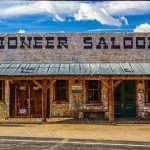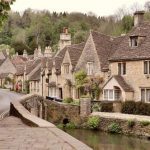 Music
Music  Music
Music  History
History 10 Less Than Jolly Events That Occurred on December 25
 Weird Stuff
Weird Stuff 10 Funny Ways That Researchers Overthink Christmas
 Politics
Politics 10 Political Scandals That Sent Crowds Into the Streets
 Weird Stuff
Weird Stuff Ten Bizarre Facts About The Doge Meme
 Our World
Our World 10 Ways Your Christmas Tree Is More Lit Than You Think
 Movies and TV
Movies and TV The 10 Coolest Stars to Set Sail on The Love Boat
 History
History 10 Things You Didn’t Know About the American National Anthem
 Technology
Technology Top 10 Everyday Tech Buzzwords That Hide a Darker Past
 Humans
Humans 10 Everyday Human Behaviors That Are Actually Survival Instincts
 Music
Music 10 Surprising Origin Stories of Your Favorite Holiday Songs
 History
History 10 Less Than Jolly Events That Occurred on December 25
 Weird Stuff
Weird Stuff 10 Funny Ways That Researchers Overthink Christmas
Who's Behind Listverse?

Jamie Frater
Head Editor
Jamie founded Listverse due to an insatiable desire to share fascinating, obscure, and bizarre facts. He has been a guest speaker on numerous national radio and television stations and is a five time published author.
More About Us Politics
Politics 10 Political Scandals That Sent Crowds Into the Streets
 Weird Stuff
Weird Stuff Ten Bizarre Facts About The Doge Meme
 Our World
Our World 10 Ways Your Christmas Tree Is More Lit Than You Think
 Movies and TV
Movies and TV The 10 Coolest Stars to Set Sail on The Love Boat
 History
History 10 Things You Didn’t Know About the American National Anthem
 Technology
Technology Top 10 Everyday Tech Buzzwords That Hide a Darker Past
 Humans
Humans 10 Everyday Human Behaviors That Are Actually Survival Instincts
10 American Cities, Towns & Villages That Are Unlike Any Other
The United States is made up of approximately 19,495 incorporated cities, towns, and villages. With so many places to call home, it’s only natural that, generally, it’s the most well-known places that are the ones that come to mind—the synonymous movie industry of Los Angeles, California, the world-famous skyscrapers of New York City, or the annual Mardi Gras celebration and jazz music found in New Orleans, Louisiana.
However, often, it’s not a large, populous area, grand architecture, or natural beauty that makes an area truly unique. Many times, it is quite the opposite, and it’s the peculiar ways of life, odd attractions, and even what is lacking from the traditional norms that make a city or town truly a one-of-a-kind gem.
Therefore, rather than focusing on the ordinary, we will focus on the extraordinary places found nestled deep within the United States. From a city that is a geo-political oddity and can only be reached by crossing an international border to a town with only one resident to a city with no addresses to the most toxic ghost town in America, these cities and towns stand apart from the rest. In fact, they are the only cities in the entire country to boast such peculiar feats and histories.
Here are ten American cities, towns, and villages that are unlike any other in the country.
Related: 8 Reasons The British Crown Still Controls The United States
10 Monowi, Nebraska: The Only Town With a Population of One
Between 1856 and the start of World War I, approximately 50,000 immigrants from the Czech Republic seeking a slice of the American dream chose to make the state of Nebraska their new home. One particular town—Monowi, Nebraska—was founded by Czech immigrants in 1902 as a farming, ranching, and railroad town. Located just 5 miles (8 km) from the South Dakota state line, this tiny town measures just 0.21 square miles (0.54 sq km) and is nestled among the rolling prairie grasslands and golden wheat fields of Nebraska.
By the 1930s, Monowi had become a bustling stop on the Elkhorn Railroad and had all the features of a lively Great Plains village—grain elevators, schools, a post office, a church, two banks, grocery stores, a restaurant, and even a prison. However, despite the town’s growth and its becoming home to as many as 150 residents, by the mid-20th century, the town’s vibrant lights began to dim.
As farming conditions worsened and rural economies collapsed throughout the Great Plains after World War II, entire communities in the U.S. heartland, including Monowi, started to disappear. Between 1967 and 1970, Monowi’s post office and the last of its three grocery stores closed, followed by the closure of the school in 1974. From there, the modernization of farming and the closure of the railroad in 1978 only accelerated Monowi’s decline, forcing residents to move elsewhere in search of work.
By 1980, the population of Monowi dwindled to just 18. By the year 2000, only two residents remained—husband and wife Rudy and Elsie Eiler, who were still running the Monowi Tavern. The couple remained the town’s only two residents until 2004, when Rudy passed away, leaving Elsie to not only run the tavern but the whole town. In fact, Elsie remains the only resident of Monowi, making the town the only incorporated municipality in the United States with a population of one.
While being the only person to live in a town might seem like an introvert’s dream, for 90-year-old Elsie, being the town’s sole occupant also comes with many jobs—mayor, clerk, treasurer, librarian, bartender—and it is her dedication that has kept Monowi alive. Each year, Elsie hangs up a notice in Monowi’s only business (her bar) advertising mayoral elections and then votes for herself.
As the incumbent, Elsie is also required to produce a municipal road plan every year to secure state funding. She also collects approximately $500 in taxes from herself annually in order to keep the town’s three lampposts flickering and its water flowing. Additionally, Elsie keeps track of the nearby vacant residential lots, despite their evident decay, just in case anyone should decide to move into one of the buildings.
Although Elsie lives alone and travels just a few feet from her trailer to open the bar, she’s far from lonely. Elsie has regular tavern customers who come from neighboring towns approximately 20 to 30 miles (32 to 48 km) away to check on her each week. In addition to the tavern’s Sunday night Euchre card game, which draws people from up to an hour away, the tavern has also been visited by people from all 50 states and more than 60 countries. Not too bad for a town of one.[1]
9 Carmel-by-the-Sea, California: No Street Addresses
Carmel-by-the-Sea, often referred to as just Carmel, is a one-square-mile (2.5 sq km) city nestled along the California coast in Monterey County. This coastal city, which is home to approximately 3,300 residents, is known for its white sand beaches, storybook charm, and rich artistic history. Aside from the fairy-tale vibes and European feel, this picturesque oceanside town boasts a variety of notable residents, unique annual events that celebrate the city’s history, and offbeat laws and culture that make Carmel unlike any other place.
Officially incorporated in 1916, some of Carmel’s earliest residents included writers Mary Austin, Sinclair Lewis, and Jack London. From there, the list of prominent people who chose to make Carmel their home only grew—Ansel Adams, Joan Fontaine, Reggie Jackson, Robert Louis Stevenson, and Betty White—just to name a few. After retiring from show business, actress and animal rights activist Doris Day purchased the historic Cypress West hotel in the mid-1980s, changing its name to The Cypress Inn and converting it into Carmel’s first pet-friendly boutique hotel. Hollywood legend and local resident Clint Eastwood also served as the mayor of Carmel from 1986 to 1988.
In addition to the star-studded resident list, the city of Carmel also has some rather offbeat laws and ways of life. For example, a permit is required to wear high heels. While this is often believed to be an urban legend, the municipal code of Carmel does indeed ban wearing shoes having heels more than 2 inches (5 cm) in height or with a base of less than one square inch (6.4 cm) unless the wearer has obtained a permit for them. While this peculiar law has remained in the books since 1963, this ordinance has not been enforced. However, one of the most unique characteristics of Carmel is that there are no street addresses.
Why exactly are there no street addresses? Unwilling to see their village “citified,” Carmel’s founding fathers decided to bypass the idea of house-to-house mail delivery. Therefore, to date, none of the houses, stores, or restaurants have numbers or addresses.
So, how does a resident give their “address” to a visitor, delivery person, or utility provider? When asked for their address, residents describe their home’s color or style, nearby landmarks such as Cypress trees or fire hydrants, or simply give their location relative to the nearest cross street. Many houses even have signs with either whimsical names such as Sea Urchin, Neverland, Dream Catcher, and Pinch Me, or descriptions such as “San Antonio 3 SE of 9th.” When needing to obtain utilities or a permit, residents can also provide their assessor’s parcel number (APN).
But how do residents receive their mail? Given that there is no mail delivery service, residents must pick up their mail at the U.S. post office, the only building in town with an official address. However, every resident is provided with a P.O. box free of charge.
Despite Carmel being address-free for more than a century, that may change very soon. Given escalated complaints from Carmel residents, along with local fire and law enforcement, the city council voted 3-2 to move forward with a plan to issue street numbers in July 2024. As of yet, there has been no change, but in November 2024, residents will vote for city council members and a mayor that will ultimately determine the fate of the city’s addresses, or lack thereof.[2]
8 Miami, Florida: The Only Major U.S. City Founded by a Woman
Miami, Florida, is known as the Magic City, and for good reason—it has stunning beaches, vibrant nightlife, a rich culinary scene, and a diverse culture. However, had it not been for the drive and determination of Julia DeForrest Sturtevant Tuttle, a widow from Cleveland, Ohio, the Magic City may never have become a city at all.
So, how exactly did a widow from Ohio become the “Mother of Miami”? After hearing stories from her father about the beauty of Biscayne Bay in southern Florida, Tuttle made her first visit to the area in 1874. Tuttle’s father, Ephraim Sturtevant, owned a 40-acre (16-hectare) orange grove there. Although Tuttle eventually returned to her home in Cleveland, she had already fallen in love with the area on the north side of the Miami River and saw great potential in it.
Therefore, after the death of her husband, iron foundry owner Frederick Leonard Tuttle, in 1886, and later, her father’s death in 1891, Tuttle sold her Cleveland home and decided to permanently move to the Biscayne Bay area with her two children. Once there, the 42-year-old widow leveraged the land she had inherited from her father, along with her late husband’s resources, to purchase 644 acres (260 hectares) of land on the north bank of the Miami River, which included Fort Dallas. Fort Dallas was a military post established during the Seminole Wars and would later become the area of downtown Miami.
Despite the desolate, swampy area of land, Tuttle was convinced that the area would become a great city and a center of trade for the United States and South America. However, she also knew that if the area was ever going to become a city, it needed one thing: a railroad.
In an effort to make the land prosper, Tuttle began a campaign to convince railroad baron and oil tycoon Henry Flager to extend his tracks further down the coast of Florida to the area that would become Miami, even offering to divide her land with him if he agreed. Flager, however, was not convinced and refused Tuttle’s offer.
Thankfully, Mother Nature gave Tuttle just the help she needed to see her dream become a reality. In 1894, the Great Freeze wiped out most of Florida’s citrus crop, sparing only those in Miami. Seizing the opportunity, Tuttle sent fragrant orange blossoms to Flagler to prove the area was warm and frost-free. Having lost most of his business by this time, Flagler decided to put Miami on his map in exchange for 100 acres (40 hectares) of Tuttle’s land for a railroad terminal and hotel and an additional 263 acres (106 hectares) in alternate city blocks for the future city of Miami.
Less than six years after Tuttle took up residence, the Florida East Coast Railway train arrived in downtown Miami on April 13, 1896. On July 28, 1896, the city was incorporated. To date, Miami remains the only major U.S. city founded by a woman.[3]
7 Point Roberts, Washington: A Geo-Political Oddity
When the United States and Great Britain signed the Oregon Treaty in 1846, the agreement drew an international border along the 49th parallel, separating Canada and the United States. However, in doing so, the line clipped the end of Canada’s Tsawwassen Peninsula, leaving a sliver of the United States at its bottom tip. To the south of this line sits Point Roberts, a 5-square-mile (13 sq km) fingernail of British Columbia that’s actually part of the United States, specifically, the state of Washington.
Point Roberts, Washington, is like many small coastal towns in the Pacific Northwest, with access to magnificent places where you can fish, hike on the beach, or go whale watching. But unlike other coastal towns, Point Roberts is a geo-political oddity, so getting there is a bit more complicated.
Point Roberts is what is formally known as an exclave—part of a territory that is geographically separated from its main part by another territory. Therefore, the only way to travel from Point Roberts to the rest of Washington and the U.S. is by passing through one international border crossing, driving 25 miles (40 km), and passing through another international border crossing into the United States. Essentially, Point Roberts is a gated community guarded by the U.S. Department of Homeland Security.
The approximately 1,300 full-time residents describe Point Roberts as “Cape Cod meets Midwest,” although there is a unique mix of both American and Canadian culture. For example, there is an 8-foot (2.4-meter) Statue of Liberty at the marina. The speed limit signs are in miles per hour as opposed to Canadian kilometers, but the gas station price signs are reflected in liters. The cash registers also have two drawers—one side dispenses Canadian funds and the other side American. Many homes also proudly display both the maple leaf as well as the stars and stripes. However, living by an international boundary also comes with its own unique set of challenges.
There is no high school in Point Roberts, so students attend the local school house until the third grade. Starting in fourth grade, students are bussed 45 minutes to the public schools in Blaine, Washington, meaning that daily school trips require more than 50 miles (80 km) of travel and four border crossings each day. Residents aren’t allowed to bring in certain items, such as whole tomatoes. However, sliced tomatoes are okay. Additionally, for Canadians, as well as those with dual citizenship, the choice to live in Point Roberts also means losing access to Canada’s universal health coverage, which is a difficult choice given that the town clinic is only open three days a week and the closest hospital and pharmacy are in Bellingham, Washington—47 miles (75 km) away!
However, for those who choose to call Point Roberts home, such oddities are simply part of life.[4]
6 Mackinac Island, Michigan: The Only U.S. City to Ban Cars
There are so many things that make Mackinac Island special—a cannon blast from the Revolutionary War-era fort each morning to wake the island, the natural beauty of Arch Rock, and the lilacs that burst throughout the island in early June. However, it is the island’s distinct lack of one particular modern-day convenience that makes it truly special.
On Mackinac Island, there is no sound or smell of cars, no traffic lights at intersections, and no gas stations. Rather than motorized vehicles, the horse remains at the center of Mackinac Island culture. In fact, Mackinac Island has banned cars entirely and is the only city in the United States to do so.
Why the ban on motorized vehicles? When an automobile first drove down Main Street in 1898, not only did it scare the horses, but it also made a few carriagemen worry about the future of their business. This prompted workers in the carriage industry to file a petition with the village council on July 6, 1898, calling for a ban on the “dangerous horseless carriages.” The ban was enacted the same day, and Mackinac Island has been car-free ever since.
While the motor vehicle ban has since been expanded to include motorized bicycles and Segways, there are some exceptions to the rule. Given that emergency vehicles are an obvious necessity, there are emergency vehicles—police cars, fire trucks, and an ambulance—along with state park vehicles that are used for maintenance, as well as utility trucks. Ironically, the only car accident on Mackinac Island involved a fire truck and an ambulance in 2005. As both vehicles were responding to a ferry passenger in need of medical attention, the fire truck hit the open door of the ambulance, causing “minor” damage.
On occasion, there have also been exceptions allowing cars on the island for filmmaking purposes and visits from political leaders, such as former President Gerald Ford’s visit in 1975, the filming of Somewhere in Time in 1979, and when former Vice President Mike Pence arrived to speak at the Mackinac Republican Leadership Conference in 2019. However, the car-free character of Mackinac Island has remained an integral part of the culture for over 125 years, making it a unique travel destination where horses are simply a way of life.[5]
5 Scottsboro, Alabama: The Lost Luggage Capital
Nestled in North Alabama at the tail end of the Appalachian Mountains is the small town of Scottsboro. From its founding in 1856, Scottsboro has evolved from a tiny stop on the Memphis and Charleston rail line to a city of approximately 14,000 that is rich in both history and natural beauty.
While this city boasts a wide variety of unique dining experiences, museums, and outdoor recreation, there is one thing you will find in Scottsboro that you won’t find anywhere else. Here, you’ll find a store called Unclaimed Baggage, the nation’s only retailer of lost luggage. In fact, Scottsboro has been dubbed “The Lost Luggage Capital of the World,” given that the Unclaimed Baggage Center’s 50,000-square-foot (4,645-sq-meter) warehouse is home to over one million items at any given time. It attracts approximately one million visitors from all over the country and the world each year.
Just how does the store acquire so many lost items? While policies differ from one airline to another, most airlines will declare a bag lost between five and fourteen days after a flight. Should the missing luggage be found, the airline will then spend up to three months attempting to get it back to its owner. However, if their attempts are unsuccessful, the airline simply gives up and reimburses the owner up to $3,800. Legally, if the luggage is not returned, the airlines can then get rid of your belongings. That’s where the Unclaimed Baggage Center comes in.
Unclaimed Baggage has contracts with all major airlines and purchases unclaimed bags and their contents after an intensive search for the original owner. The store also buys bags from train stations and car rentals, as well as the additional surplus cargo. While each individual item is considered for sale at the Unclaimed Baggage Center, only one-third of the items are typically sold—an additional one-third gets recycled, and another third is donated to various charities like the Salvation Army.
Aside from some pretty incredible finds at anywhere from 20-50% off—engagement rings, Louis Vuitton purses, Prada shoes, and iPads—there is also an Unclaimed Baggage Museum that features more than 100 of the most intriguing items ever found in lost bags. Just a few of these oddities include a centuries-old violin believed to have been made by a student of Antonio Stradivari, a set of McDonald’s arches, a full suit of armor, and a giant puppet named Hoggle from the movie Labyrinth that Jim Henson told Unclaimed Baggage they could keep.[6]
4 Picher, Oklahoma: America’s Most Toxic Ghost Town
Founded in 1913, the small former mining community of Picher sits in the northeastern corner of Oklahoma, just a short distance from the Oklahoma-Kansas border. Once a thriving community, Picher is now abandoned, and all that remains are the crumbling, vacant buildings surrounded by towering hills of chat, a hazardous byproduct of lead and zinc mining.
So, how did this once-booming community become America’s most toxic ghost town? Sadly, it was mining that both helped build this industrial boom town and, ultimately, what destroyed it.
The area developed literally overnight after a homeowner discovered lead on his property in 1913. The town was incorporated in 1918 and named after O.S. Picher, the owner of the Picher Lead Company. This booming business became the center of Picher’s economy. In its heyday, Picher had more than 200 mills processing 10 million pounds (4,535,923 kg) of ore a day.
Despite being such a quaint town in rural Oklahoma, Picher quickly made a name for itself, garnering international attention for supplying jobs to out-of-state workers and its contributions throughout World War I and World War II. Zinc and lead were crucial for ammunition and building tanks and trucks, and over half of the lead and zinc used in World War I came from Picher. In fact, Picher had the most productive mining field in the Tri-State Lead and Zinc District, producing more than $20 billion in ore from 1917 to 1947.
While the mining stopped between the 1960s and 1970s, unfortunately, by that time, the damage had already been done. Contaminated water began to seep from the mines, nearby Tar Creek turned red, and the ground itself was incredibly unstable. Picher was left surrounded by approximately 30 massive hills of chat, mill sand, and sludge, equalling 178 million tons. Eventually, the federal government surveyed the area and determined it was uninhabitable. Despite the health hazards of lead exposure, toxic dust, water contamination, and the risk of cave-ins, there were still residents who stayed behind, unwilling to give up their homes.
Then, in 2008, an EF-4 tornado tore through the town, accelerating the exodus of Picher’s remaining residents. The town’s incorporated status was withdrawn on September 1, 2009, and the demolition of houses and buildings began a few months later. However, it wasn’t until the death of Gary Linderman, the owner of the Ole’ Miners Pharmacy, in 2015 that the town was officially abandoned.[7]
3 Hamtramck, Michigan: The Only City with an All-Muslim Government
The original Hamtramck Township was settled in 1798 by the French, who came largely from Quebec. It was named after Jean Francois Hamtramck, a French-Canadian soldier who fought in the American Revolutionary War. The township was a vast area from Base Line (Eight Mile Road) to the Detroit River and from Woodward Avenue to Lake St. Clair, but it consisted mostly of swamps and forests at the time. (Link 58)
Throughout the 19th century, French and later German farmers began to slowly cultivate the 2.1 square miles (5.4 sq km) of land. In 1901, Hamtramck was officially designated as a village. However, only a few hundred people lived in the village at that time. It wasn’t until the Dodge brothers decided to build a factory that Hamtramck really began to flourish.
John and Horace Dodge wanted to open a new automobile factory where they could build their own cars, so in 1910, they purchased a piece of property on the south side of Hamtramck. In order to make their dream a reality, the Dodges put out a call for employees, which attracted Polish laborers by the thousands. Dodge Main opened in 1914, and the population of Hamtramck grew from 3,559 residents in 1910 to a staggering 46,615 by 1920. In fact, Hamtramck became known as “Little Poland” for much of the twentieth century, noted for its Polish bakeries, restaurants, shops, and churches, where Polish masses are still held today.
In 1922, Hamtramck was incorporated as a city to prevent annexation by Detroit. While Hamtramck’s Polish population amounts to only about 8% of its 28,000 residents today, the city has transformed again to become a landing pad for Arab and Asian immigrants, specifically those from Yemen and Bangladesh. Living up to its slogan, “The world in two square miles,” approximately 30 languages are spoken within Hamtramck today.
The city also made headlines after Amer Ghalib was elected as Hamtramck’s first Muslim mayor in 2021, breaking an over 100-year streak of the city being represented by a Polish-American mayor. That same year, Hamtramck also became the first city in the nation with an all-Muslim elected leadership.[8]
2 Miracle Village, Florida: A Community of Sex Offenders
In southern Florida, on the southeast corner of Lake Okeechobee lies a small community called Miracle Village. It is approximately 3 miles (5 km) from the nearest town of Pahokee and is surrounded by sugar cane, swamps, canals, and alligators. While its name would suggest that the town is a little piece of Florida paradise, there is much more to Miracle Village than meets the eye.
The rectangular compound made up of 52 off-white duplexes on six streets and two roads was formerly known as Pelican Lake Village and used to house migrant workers that would work in the surrounding miles of sugarcane fields. However, now, more than half of the population of this idyllic Florida town are sex offenders.
What changed? The Miracle Village community was founded in 2009 by an evangelical Christian pastor, Dick Witherow, who is the head of Matthew 25 Ministries, as an answer to Florida’s sex offender registration laws.
While each state has varying laws, Florida’s are some of the most stringent. For example, sex offenders in Florida must notify public officials when they move, are subject to a 10 p.m. to 6 a.m. curfew, and are prohibited from living within at least 1,000 feet (304 meters) of a school, daycare center, park, playground, or any other place where children gather. In some counties, sex offenders are banned from being within 3,000 feet (914 meters) of places where children congregate, making it impossible to live in most towns and cities. Therefore, given that Miracle Village is physically removed from populated areas, surrounded by hundreds of acres of sugarcane, and several miles from the nearest town, it meets all of Florida’s state requirements and acts as a haven for sex offenders struggling to find housing.
In the community of 200, 120 are registered and convicted sex offenders, one of whom is a woman. While the convictions vary among the residents, pedophiles and those with a history of violence or drug abuse are not allowed into the village.[9]
1 Washington, D.C.: No Voting Representation
Serving as the nation’s capital city, Washington, D.C., is a place where you can visit some of the world’s most famous monuments, such as the Lincoln Memorial, the Washington Monument, and the Vietnam War Veterans Memorial. Aside from the hundreds of sculptures and monuments that adorn the parks, gardens, buildings, avenues, and cemeteries, Washington, D.C., also stands apart from any other city in the country because it is not in a state but, instead, a district: the District of Columbia.
Specifically, Washington, D.C., is a federal district under the exclusive legislative jurisdiction of the United States Congress. Unfortunately, this also means that while DC residents are citizens of the United States, just like any other resident in the country, they lack representation in Congress despite paying taxes. In fact, DC residents pay more in federal taxes per person than any other state.
This means that despite being a capital city, ironically, the residents lack full self-governance. All local legislation affecting the city, including the city’s budget, policy decisions affecting residents’ health and welfare, and decisions regarding public schools, must go before Congress for approval.
While the District of Columbia has pushed for statehood, to date, there is no voting representation in Congress, and the federal government maintains jurisdiction over the city. This also means that the United States is the only country in the world with a representative, democratic government that denies voting representation to the citizens of its capital city.[10]








